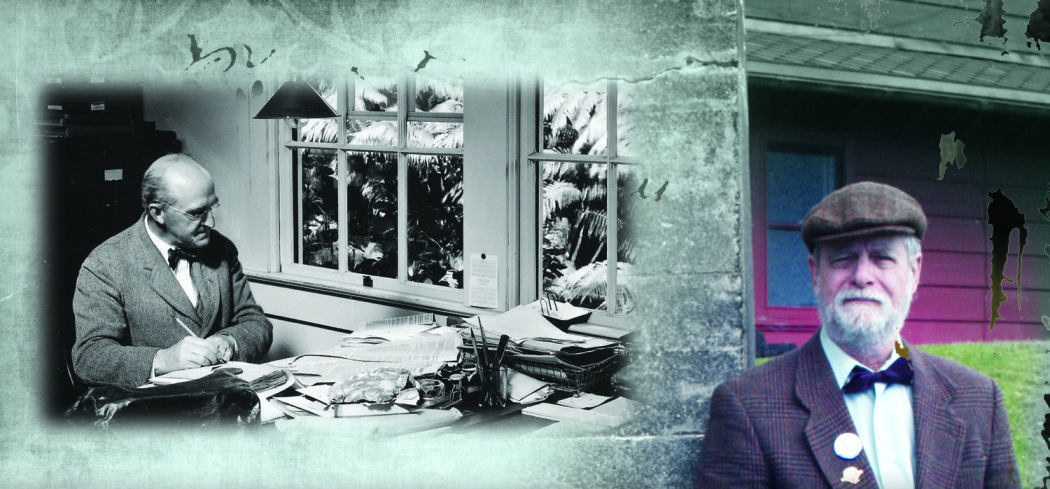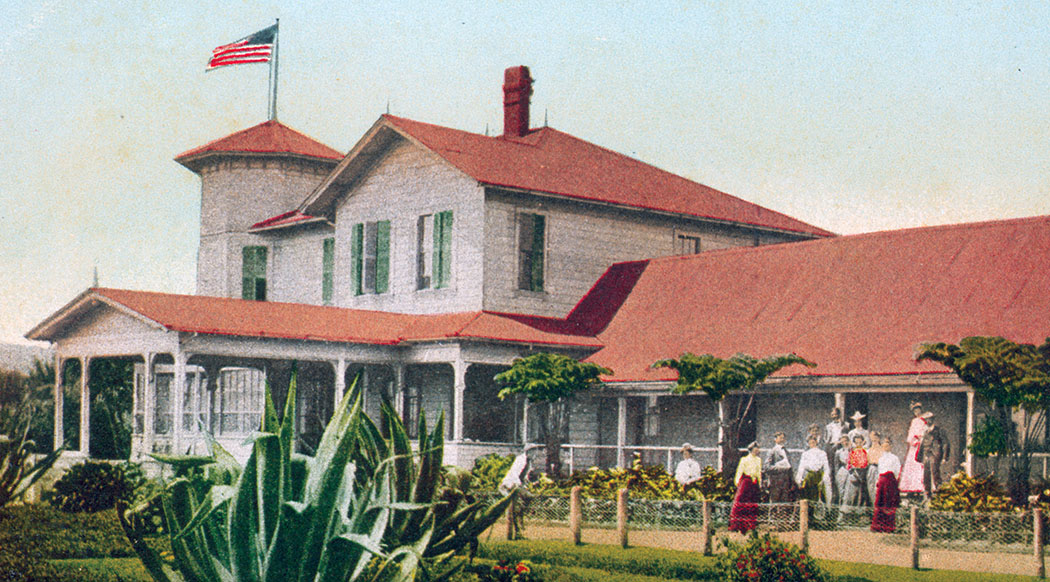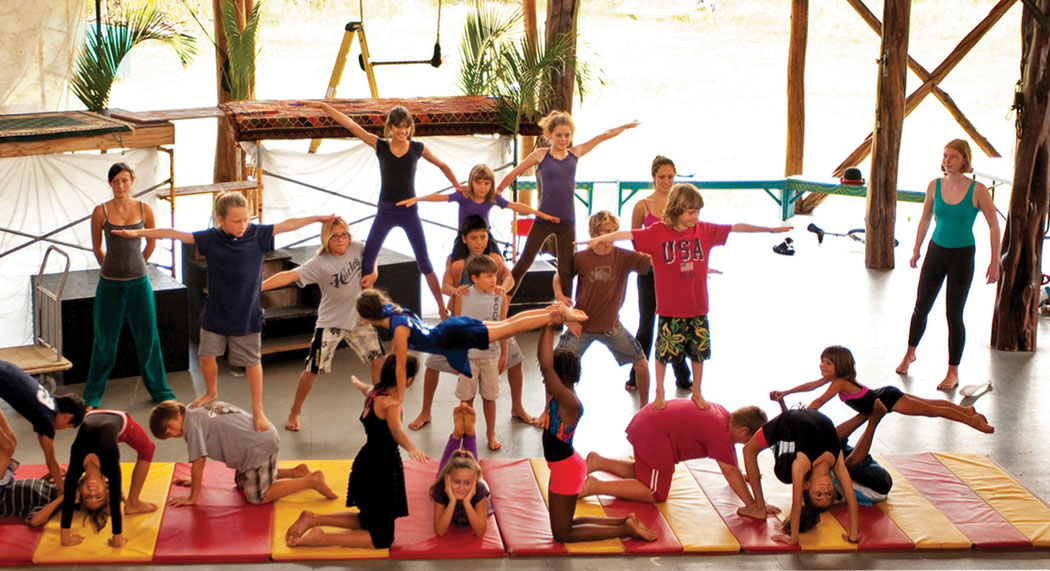
More Than a Wooden Big-Top: Soaring High at S.P.A.C.E. in Puna
 By Alan D. McNarie
By Alan D. McNarie
Juggler Graham Ellis, who founded Puna’s Hiccup Circus in 1984 to educate and inspire local kids through circus arts, longed for a home base. For nearly two decades, Ellis, his performer friends and students had performed in schools and put on circus extravaganzas in various venues around the island, as he says, “creating magic in the most difficult circumstances.” He needed a permanent “Big Top.”

“We were always on the road,” he sighs, sitting in his new office. And when at home, practice and training sessions were held outdoors, in the jungle, at the mercy of the elements.
After ten years in the planning stage and ten weeks in the building, Ellis’ brainchild, Seaview Performing Arts Center for Education, or S.P.A.C.E.., opened in November of 2007.
Standing in the jungle above Kalapana Seaview Estates, deep in Lower Puna, this unique building is perhaps Hawaii’s best kept cultural secret. Designed as a permanent Big Top for Hiccup Circus, it has been embraced by the community and rapidly become much more.
With a soaring, two-tiered roof, high enough to host circus acts featuring locally trained kids performing alongside world-class talent from troupes such as Cirque Du Soleil, the 5,000-square-foot structure offers space for many more functions as well. It houses a community theater, musical performances by local artists, a night bazaar with live entertainment, a farmer’s market, after-school programs, various community classes and workshops, and serves as home for a charter school.
S.P.A.C.E.. is a model of sustainable living: the building is entirely solar powered—it often generates more electricity than it needs, so it’s being connected to the island’s power grid to send off the excess—with features designed to funnel in the area’s trade winds for natural ventilation and to provide a maximum of usable natural lighting. Every October, the center is the finish line for the Race to S.P.A.C.E.., featuring human-powered vehicles that have ranged from regular bicycles to a pedal-powered, near-life-sized whale.
Ellis is happy to report Hiccup no longer tours. There’s no better performance space in the state for a circus than the one just beyond his new office door. Sixteen 20-foot-tall posts, made from 100- to 300-year-old ‘ohi‘a trees that were salvaged on the site support trusses that were built and hand-painted in rainbow colors before raising them to support three tons of tongue-and-groove lumber that make up a ceiling that’s high enough for trapeze artists. Every post and board has been hand-sanded and double varnished, because people are meant to look up at that ceiling a lot. The special “sprung floor” has a layer of hardwood flooring riding atop gymnastic foam.
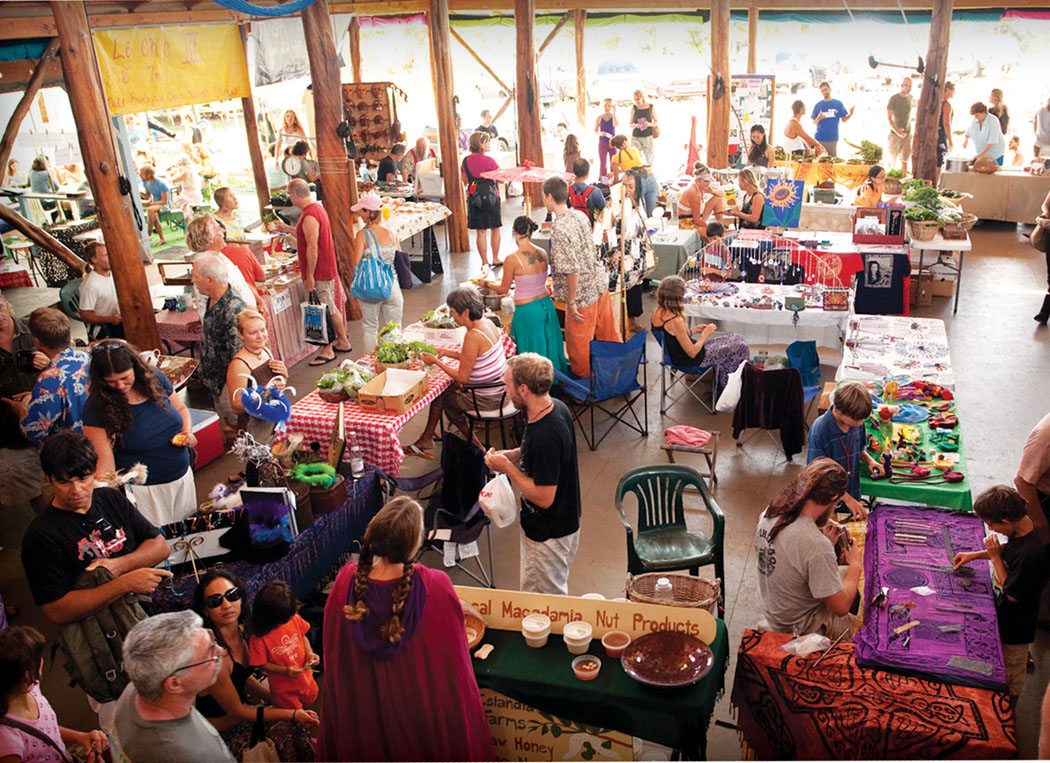
It’s the perfect setting for S.P.A.C.E.’s annual circus extravaganza, Le Chic, directed most recently by Cirque Du Soleil founding member Dolores Leonard and featuring many of Hiccup’s own students performing alongside internationally-known circus talent such as Cirque Du Soleil veteran and three-time world champion twirlsport artist Annetta Lucero. Twirlsport, for those who don’t know, is baton-twirling taken to the level of professional art. Lucero has been doing it since she was three years old, and rose to the top of her profession despite being born with three missing vertebrae and being diagnosed with systemic lupus and epilepsy. In addition to performing at S.P.A.C.E., she also teaches private classes in twirling there every Friday.
A rare Cirque Du Soleil miscue allowed professional aerialist Wailana Simcock to join the cast of Conference of the Birds, the latest production of S.P.A.C.E.’s resident Stargate Theater Company.
“The opening of Cirque Du Soleil went soft on Maui, so we were able to hire him. He was a gift—that fact that he was available here in Kalani,” says director Kate Viehl. A former professor of performing arts at Michigan State University and a 30-year theater veteran, Viehl says she first saw Simcock diving at a local pool and thought, “That’s the most finely tuned body I’ve seen since I left the mainland.”
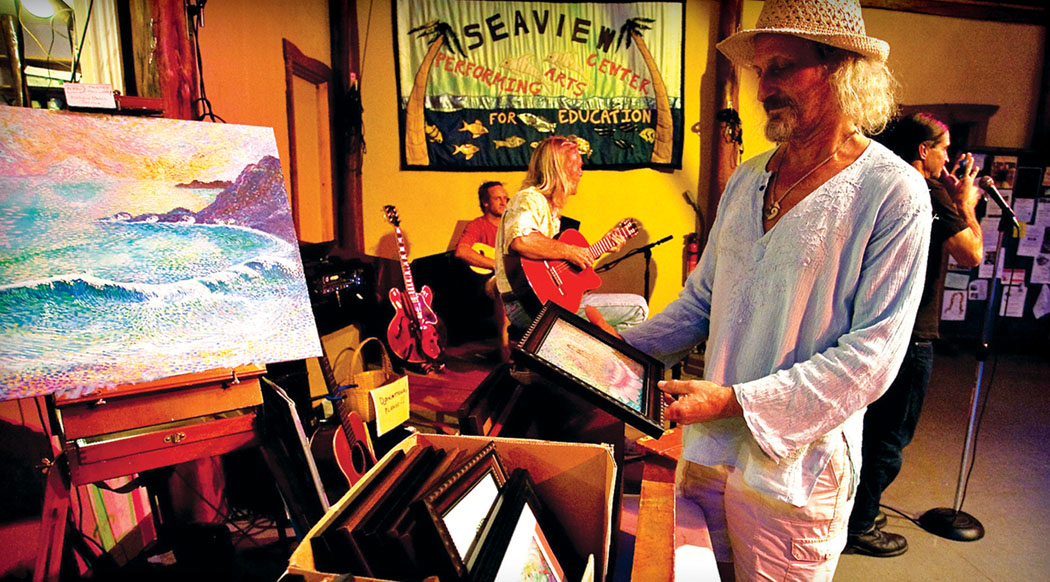
Simcock became the play’s choreographer, allowing the theater cast to take full advantage of S.P.A.C.E.’S circus-height ceiling. The play, based on a 10th-century Persian Sufi poem, is about a flock of birds who journey in search of their god. Performing in S.P.A.C.E. allows the “birds” to fly.
“We’re working on scaffolding, so the birds are moving on ropes and leaping from platform to platform,” says Viehl. Because of the difficulty, the cast rehearsed for seven months before opening.
The three-dimensional performance S.P.A.C.E. posed a special challenge for lead actor Raj Kumar Olson, a classical guitarist who also composed the play’s score. He has to “fly” and play guitar at the same time.
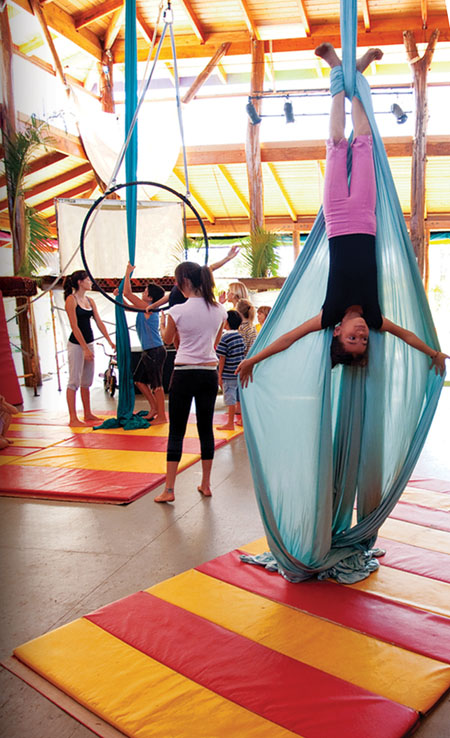
“Classical guitar players don’t usually swing,” jokes Viehl.
The play may have an ancient source, but it’s hardly stuffy. Adapted by Peter Brooks and Jean-Claude Carrier, both dramatic and farcical and paced, as Viehl says, “like a Tarantino movie,” the play covers topics as modern as date rape and drug addiction. It opened to a sold-out house last New Year’s Eve, and has been performed twice a month since then. The next play dates are March 12 -13 and April 16-17.
A glance at March and April calendars on the office wall illustrates the range of other cultural events at the center. Groove Temple, an electronic dance event, is happening on March 19 and April 9. On March 27, the wooden big top will host a Trash Fashion Show. On April 3, island kids 18 years old or younger are invited to show off their eclectic talents in the East Hawai‘i Youth Showcase.
S.P.A.C.E.’S apparent deep talent pool comes, in part, because it’s also the hub of a unique performing artist’s cooperative. Founded in 1987, Belly Acres is a 12-acre garden that holds a collection of homes, temporary shelters (most with juggler-friendly high ceilings) that serve as residences for 20-plus circus performers and their families, as well as assorted chickens, cats and horses. Some of the co-op members come for just part of the year, but S.P.A.C.E. manager Jenna Way notes that there’s “less of a fluctuating population now than there used to be. People who are pursuing that lifestyle realize that it’s not compatible with transient behavior.
Like S.P.A.C.E.. itself, Belly Acres has the goal of being as self-sustaining as possible. The electricity is from solar cells, the water comes from rainwater catchment tanks, the toilet facilities are composting. Most of the collective’s food comes from its own fruit trees, vegetable gardens and chickens—with coconuts, jellies and jams left over to sell to the community.
“We are en route to becoming one of the most sustainable, if not the most sustainable, art centers in the country,” says Ellis. It’s a long-term goal that, he notes, has “become an immediate necessity,” because of the bad economy.

“Grants have all but died out,” he says. “We have gotten only $4,000 in the last 12 months. We are not alone in this, but we are not going under. We are embracing this new economic paradigm.”
As well as their performances, the artists are sharing that paradigm of self-sufficiency, with the community. Shortly after S.P.A.C.E.. opened, says Ellis, “We realized that this facility could offer much more than a home for the circus.” It could, and did, become the cultural and economic hub for this poorest of Hawai‘i’s communities.
One of the center’s first moves toward this broadened mission was the Saturday farmer’s market, which features only locally-grown produce and local products and services. It opened in November of 2007 with only two vendors’ tables. “We’re now having anything from 30 to 40 vendors every week, and 300 to 400 customers.” But beyond that, she says, “It’s just become a sort of community gathering place. The personal connections that people are making are just as important as the commerce.
“Monday morning, somebody’s hired somebody that they meet at the market on Saturday morning,” elaborates Ellis.
The success of the farmer’s market was followed by the Wednesday Night Bazaar, which is even more of a social gathering, with featured musicians, an open mike (which often includes both musicians and circus performers) and an international smorgasbord: Ukrainian pirogis and stuffed cabbage rolls, Italian pizza (from an oven built of recycled materials) Middle Eastern, Japanese, American barbecue… The latest community enterprise is the Second Saturday Swap Meet, where residents can set up tables to hold their own mini-garage-sales.
And then there are the classes, both circus and otherwise. Hiccup holds three circus camps a year, instructed mainly by Lucero and visiting performers (but also, increasingly by Hiccup’s own graduates). There are evening circus workshops on Monday and Thursday afternoons, and “Music Exploration” on Tuesdays. The Puna School of Arts and Sciences, a Pahoa-based charter school, has a satellite school at S.P.A.C.E.. (One of the classroom spaces is watched over benignly by the Whalecycle, which hangs from the ceiling.)
The long term goal, says Ellis, is to establish a “Performing Arts High School” at S.P.A.C.E.. In the meantime, the 2.5-year-old center seems off to a grand start. “We’re out of the breast-feeding,” believes Ellis, “and into the adolescent stage…well, maybe not adolescent. But we’re toddling.” ❖

